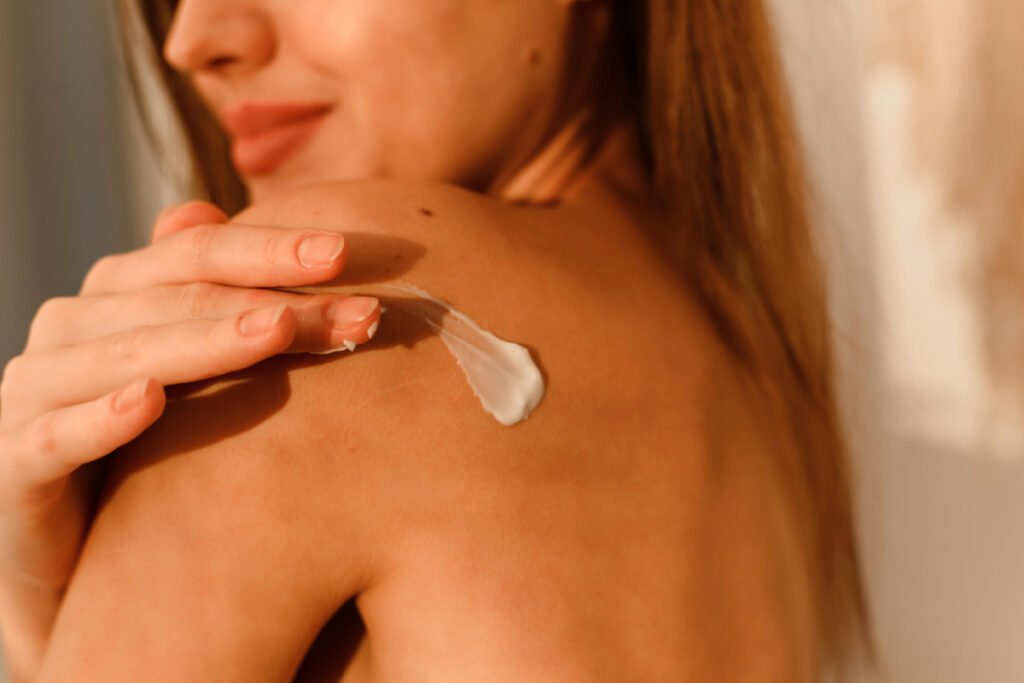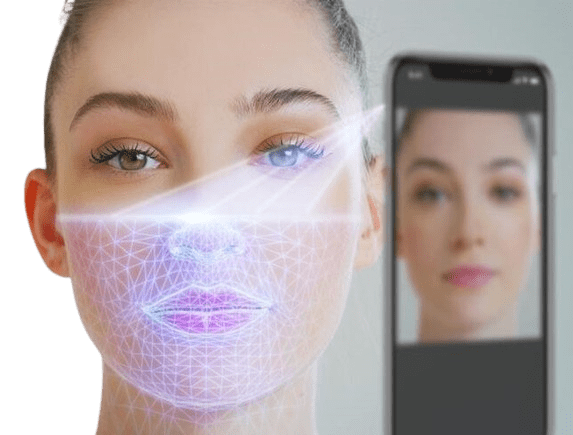
Sun protection is a critical part of any skincare routine, helping to protect your skin from sunburn, premature aging, and skin cancer. But some sunscreens may not provide the level of protection you expect: according to lab tests conducted in 2021, many commercially available sunscreens simply don’t make the mark. Further, many of us are applying sunscreen incorrectly, using too little product or skipping vulnerable parts of the body.
Below, our Eugene skin care experts are exploring the essential factors that determine a sunscreen’s effectiveness, how to choose the right product for your skin, and how to apply it to get maximum effects.
Which sunscreen do I need?
To choose the right sunscreen, look for a broad-spectrum product with a sun protection factor (SPF) of 30 or higher to provide adequate protection.
If you want to take it a step further, we’re decoding SPF, broad spectrum, PA ++++, & more—here’s what all of those designations mean, plus other factors you may want to look into before choosing the ideal product for your skin type and exposure levels:
SPF
SPF indicates the level of protection a sunscreen offers against UVB rays, which cause sunburns and contribute to skin cancer. The higher the SPF, the more UVB protection it provides. For example, products labeled SPF 30 should filter 97% of UVB rays, while SPF 50 should filter 98%.
How to choose: Choose a sunscreen with an SPF of at least 30, or preferably 50. Any increase in SPF beyond 50 translates to very small gains in terms of your protection. Remember that no sunscreen can block 100% of UV rays, so additional, physical forms of sun protection are important during peak hours outdoors.
PA ++++
While this designation is less common in the United States, PA (short for Protection Grade of UVA) is a rating that reflects how effective a sunscreen formula is at blocking UVA rays—the kind that contribute to signs of aging, like dark spots, fine lines and wrinkles, and loss of skin elasticity. The PA rating system designations are either PA+, PA++, PA+++, or PA++++; the more plus signs you see at the end of it, the higher the UVA protection.
How to choose: Not all sunscreens have this rating, but if you are choosing a sunscreen with a PA rating, look for PA+++ or PA++++ to better protect your skin from UV-induced signs of aging.
Broad-spectrum
Broad-spectrum sunscreens protect against both UVA and UVB rays. UVA rays penetrate deeper into the skin and are responsible for premature aging and wrinkles, while both UVA and UVB rays contribute to skin cancer risk.
How to choose: Always choose a broad-spectrum sunscreen to ensure good protection. Luckily, most sunscreens for sale at the pharmacy or beauty superstores offer this protection—just be sure to double check!
Water resistance
No sunscreen is entirely waterproof, but water-resistant sunscreens offer protection for a specified duration (usually 40 or 80 minutes) while swimming or sweating.
How to choose: If you plan to be in the water or engaged in physical activity, opt for a water-resistant sunscreen and diligently reapply as directed.
Look for a broad-spectrum product with a sun protection factor (SPF) of 30 or higher to provide adequate protection.
Physical vs. chemical sunscreens
Sunscreen formulations can be divided into two categories: physical and chemical. Both are considered effective and safe, so choose a sunscreen you like whose texture and cosmetic look makes it a no-brainer for you to use it every day. Here are the differences to know between physical and chemical formulas:
Physical sunscreens
Physical sunscreens, also known as mineral sunscreens, contain active ingredients like zinc oxide and titanium dioxide. These sunscreens create a barrier on the skin’s surface that reflects and scatters UV rays. Physical sunscreens are generally less likely to cause skin irritation, making them ideal for kids or those with sensitive or acne-prone skin.
Many people prefer physical sunscreens because they are easier to see on the skin to ensure proper application, potentially leading to better protection. Further, a 2021 study of sunscreens’ efficacy on both the UVA and UVB spectrums found that zinc oxide-based sunscreens tended to offer stronger protection overall.
Chemical sunscreens
The active ingredients in chemical sunscreens are organic compounds that absorb UV radiation, converting it into heat. Common active ingredients in chemical sunscreens include avobenzone, homosalate, octisalate, and octocrylene. Some individuals may experience skin irritation or allergies to chemical sunscreens, but many people prefer their generally lighter texture.
(Two other common chemical sunscreen ingredients, oxybenzone and octinoxate, were recently banned in Key West and Hawaii because of their effects on coral reefs, so they have largely been replaced in most “reef-safe” sunscreens available today.)
Trusted skincare brands
To help further ensure your product has been thoroughly tested by its manufacturer, consider using products from medical-grade, or professional, skincare brands like SkinMedica, SkinCeuticals, or Colorescience. These brands are pioneers when it comes to skin care research, and their products are available through physicians’ offices because they are known to be superior when it comes to preserving your skin’s health.
Learn about our free skincare evaluations »
How to properly apply sunscreen for maximum protection
Even the best sunscreen won’t protect your skin if it’s not applied correctly! Follow these guidelines for optimal sun protection:
Use a generous amount of product
Use a generous amount of sunscreen, typically about a shot glass-sized amount to cover all exposed skin on your body. If you are covering your face and neck only, then you need approximately enough sunscreen to draw two lines of sunscreen on your pointer and middle fingers—or, a teaspoon.
Cover easy-to-forget areas
Don’t forget easily overlooked areas like:
- Scalp, hairline, and hair part
- Ears
- Lips
- Neck
- Back of hands
- Tops of feet
Remember to cover all exposed areas of skin, including any body parts that are not covered by clothing. Be mindful of sensitive areas: Pay extra attention to areas that are more prone to sunburn, such as the nose, shoulders, and scalp (especially if you have thinning hair). Use a sunscreen specifically designed for the face, and an SPF lip balm to make it easy to remember and re-apply.
Wear it every day
Use sunscreen even on cloudy days: UV rays can penetrate clouds, so it’s essential to wear sunscreen even when it’s overcast. Sunscreen should be a part of your daily routine, regardless of the weather conditions.
Apply before sun exposure
Apply sunscreen 15-30 minutes before sun exposure to allow it to fully absorb into the skin.
Reapply
Reapply sunscreen every two hours, or more frequently if you are swimming, sweating, or toweling off.
Wear hats, seek shade, and cover up
Sunscreen is just one part of sun protection, so pair it with physical cover whenever possible. Seek shade, especially during peak sun hours (typically between 10 am and 4 pm). And wear protective clothing, such as hats, long-sleeved shirts, and pants, to further shield your skin from the sun’s harmful rays.
Wear sunglasses to protect your eyes
While they don’t sunburn, the eyes are susceptible to the effects of UV damage. Further, the delicate skin around your eyes is difficult to cover with sunscreen. Protect your eyes by wearing sunglasses that block UVA and UVB rays.
Sun care after surgery or medical spa treatments
Sun protection is crucial for those seeking rejuvenation at medical spas and plastic surgery offices, as post-treatment sun exposure can compromise results—especially during the healing process! We will give you guidelines after your procedure for avoiding sun exposure, wearing protective clothing, and using a high-quality, broad-spectrum sunscreen with SPF 30 or higher.
If your treatment or your at-home skincare regimen includes retinoids (commonly used for anti-aging and acne treatments), be aware that these increase sun sensitivity and you should be extra vigilant about sun protection. Use retinol products at night, and double up on sun protection (i.e. both sunscreen and a hat) during the day.
Let Movassaghi Plastic Surgery and Ziba Medical Spa help you protect your skin
Your skin deserves the best protection and care possible, and our experienced aesthetic team is here to help with skin treatments and professional skincare products from trusted names like SkinCeuticals and SkinMedica. If you are specifically looking for the best in sun protection, we offer a suncare-focused line of sophisticated products from Colorescience.
Led by board-certified plastic surgeon Dr. Kiya Movassaghi, the experienced aesthetic team at Movassaghi Plastic Surgery and Ziba Medical Spa in Eugene can help you navigate the world of sun protection and maintain healthy, beautiful skin. Call our Eugene office at (541) 686-8700 or contact us online to schedule a consultation with our experts to learn more about sun protection and how we can help you maintain healthy, radiant skin!
